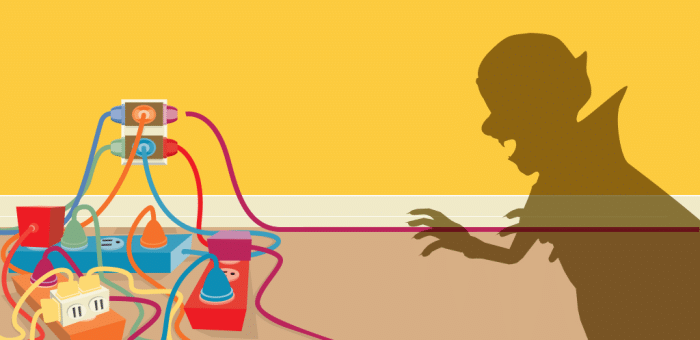Most of us don’t pay much attention to the energy used in the household. Yet, higher bills are almost always a sign of wasting energy at home.
With so many people staying at home in the last couple of years of the pandemic, things became even more burdensome. The increased use of computers, TVs, and other electronics only pushed us to consume more energy without much thought.
However, if you noticed your expenses have doubled lately, maybe the time has come for you to reconsider your approach to the entire situation. Fortunately, as an energy empowerment company, Power Wizard is here to support you with tips and services for reducing energy loss.
What Do We Mean When We Say Wasting Energy?
When we talk about a waste of energy, we’re referring to inefficiencies within your home that can cost you a lot of money in energy costs. Most people subconsciously fall into bad energy-wasting habits like failing to turn lights off after leaving a room or not fully loading the dishwasher before letting it run.
These are just a few ways that the average person lets valuable energy go to waste. Improving these and other energy-wasting habits can help you cut down on energy bills and reduce the strain we put on natural resources.
Signs of Wasteful Energy Consumption
Take a look at the list below for examples of the most common energy-wasting habits. But for a quick and efficient check, use Power Wizard to figure out if you’re paying too much in energy costs to your current provider.
You Run Your Air Conditioning System Constantly
No one wants to be uncomfortable in summer, so many of us tend to leave the air conditioner constantly running to help beat the heat. As an air conditioner’s compressor consumes a lot of power, the higher energy bills in summer come as no surprise in most homes.
Nevertheless, there are still ways you can cut down on energy usage from your air conditioner. Start by getting your AC unit checked out in the spring. That helps alleviate issues related to wear and tear.
Clogged air filters can cut off airflow and strain your blower motor, so ensure you change them at least once every three months. Not getting regular tune-ups means letting dust and dirt accumulate, which forces your AC to work harder and causes a higher energy loss.
Most importantly, your thermostat shouldn’t sit at the same temperature all the time during winter. Keeping it up to 68 degrees Fahrenheit during the day and turning the temperature down by 7-10 degrees at night can save you valuable energy.
You Use Hot Water When Using Your Washing Machine or Showering
Hot water usage is one of the most significant expenses for homeowners and can account for up to 18% of energy bills. Cutting back on the long hot showers can go a long way toward lowering your energy consumption.
In addition, you can switch to using low-flow fixtures to control your hot water usage. Look for one with a flow rate of 2.0 gallons per minute (GPM) or less for showerheads. When it comes to your faucets, try to purchase one with an aerator, which is the tip of the spout that screws on and keeps flow rates to around 2.2 GPM.
While hot water may be preferable when washing dishes, the same can’t be said for your clothes. Ninety percent of the energy used during the wash cycle goes toward heating the water, yet you can typically get your clothes just as clean using cold water.
You should also try and run full loads whenever possible. Other ways you can conserve hot water and achieve energy efficiency include:
- Repairing any leaks
- Insulating any accessible hot water lines
- Using energy-efficient appliances
You Never Turn Off or Unplug Appliances and Electronics
Most of us find it hard to imagine getting through the day without an electronic device. But did you know that simply turning off your big-screen TV or computer doesn’t mean they stop consuming energy?
The so-called phantom loads can use an additional 10% of energy in your home, which can be a lot of kWh of electricity consumed over time. Unplugging devices once you leave the room can help you stop wasting energy.
However, most people indeed forget to unplug devices or find this task too bothersome. That’s why smart energy-efficient power strips come in handy. They can help you manage your devices and even turn them off automatically when on standby mode.
You Haven’t Transitioned to Using Energy Saving Products
Having an energy-efficient home is not as challenging as you may think. Today, there are many products you can purchase to reduce pollution and cut back on energy bills. Because of the broad market offer, these products don’t even come expensive yet allow you to eliminate inefficient practices in your household.
You may think that not having energy plants resolves you from environmental duty, but that’s not the case. Every household can take part in building a greener future, regardless of the size and energy sources. Below are some products you can add to your home for more responsible energy consumption.
Smart Thermostats
One of the many everyday energy-wasting habits is the tendency to set the thermostat, then forget to return and make adjustments. For example, you may put it higher in the winter because it feels chilly outside. However, the sun beaming into your rooms can cause the room to get overheated. That means you’re wasting energy by letting your HVAC system continue to run at a higher temperature.
Smart thermostats are devices equipped with Wi-Fi that can automatically control heating and cooling within your home. You can use your smartphone to connect to a smart thermostat and raise or lower the temperature when you’re away.
Investing in a smart thermostat can help you break the cycle of wasting energy. A smart device can learn your home’s patterns and make temperature adjustments while you are at home or asleep. That way, you can ensure your home stays at a comfortable temperature while conserving energy.
High-Efficiency Washers
Modern washing machines use less water while still providing the same level of cleanliness when compared to traditional washers. They also use high-efficiency detergent, produce less suds, and drain more quickly.
As high-efficiency washers use less water, they don’t require much energy to run. With more movement than traditional solutions, modern washing machines keep clothes in motion for a thorough cleaning. The gentler spin cycle also puts less wear and tear on your clothing, preserving it for longer.
Energy Efficient Light Bulbs
At this point, incandescent bulbs should be deep into the past, along with the Walkman and cassette tapes. There are now more efficient alternatives, including light-emitting diode (LED) bulbs. These contain tiny semiconductors that have electrons and turn into light. In addition, they generate no heat, last for thousands of hours, and consume up to 80% less energy than traditional bulbs.
In the past, the cost of an LED bulb kept people away from making the switch. However, the prices have come down over the years. These days, most bulbs found in stores are of the LED variety, and because they are not as pricey as they used to be, there’s no real reason to avoid switching to LED bulbs.
How to Let Go of Your Biggest Energy-Wasting Habits
If you’ve found yourself nodding to most of the signs of wasting energy we listed today, follow our tips for making a more energy-efficient home. But in case you feel lacking the devotion and time for the task, know that you’re not alone.
Power Wizard’s comparison tool helps you find the best electricity plan by providing the tools and information needed to make informed decisions.
With the help of our services, you can choose the best electric plan for yourself, compare the prices of energy providers, and much more — all from one website. Contact us today to learn more about how Power Wizard can help you stop wasting energy.








